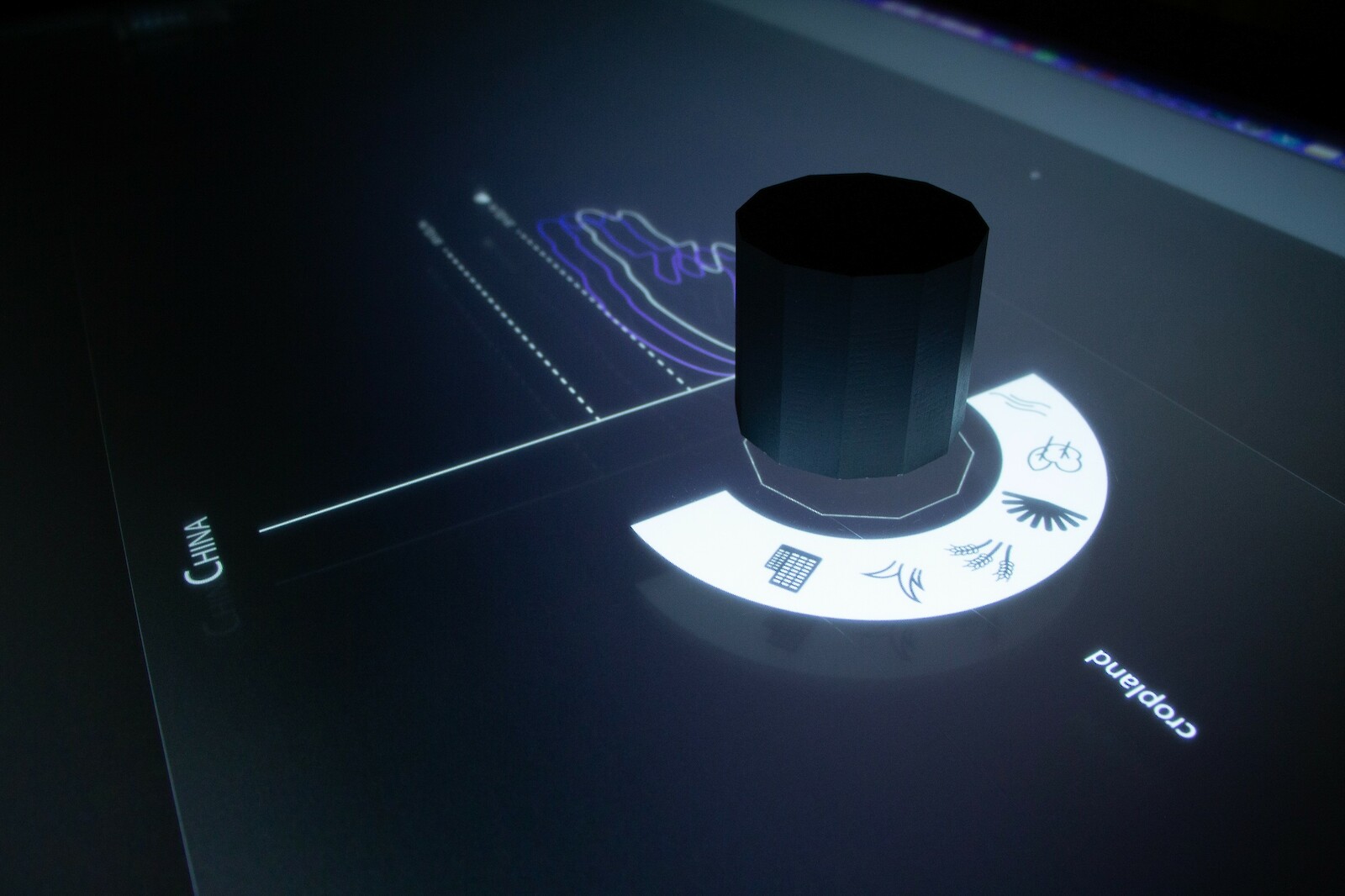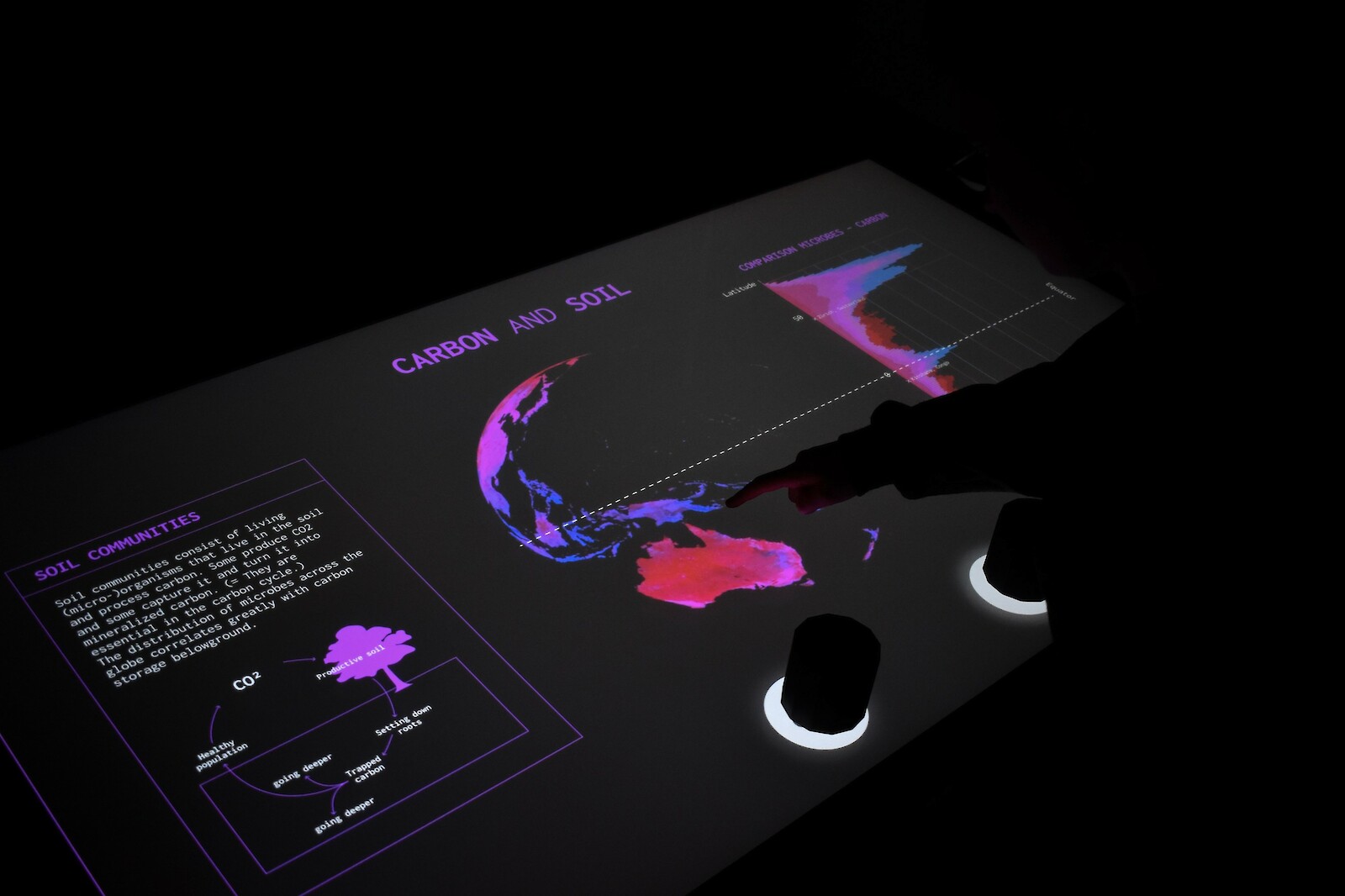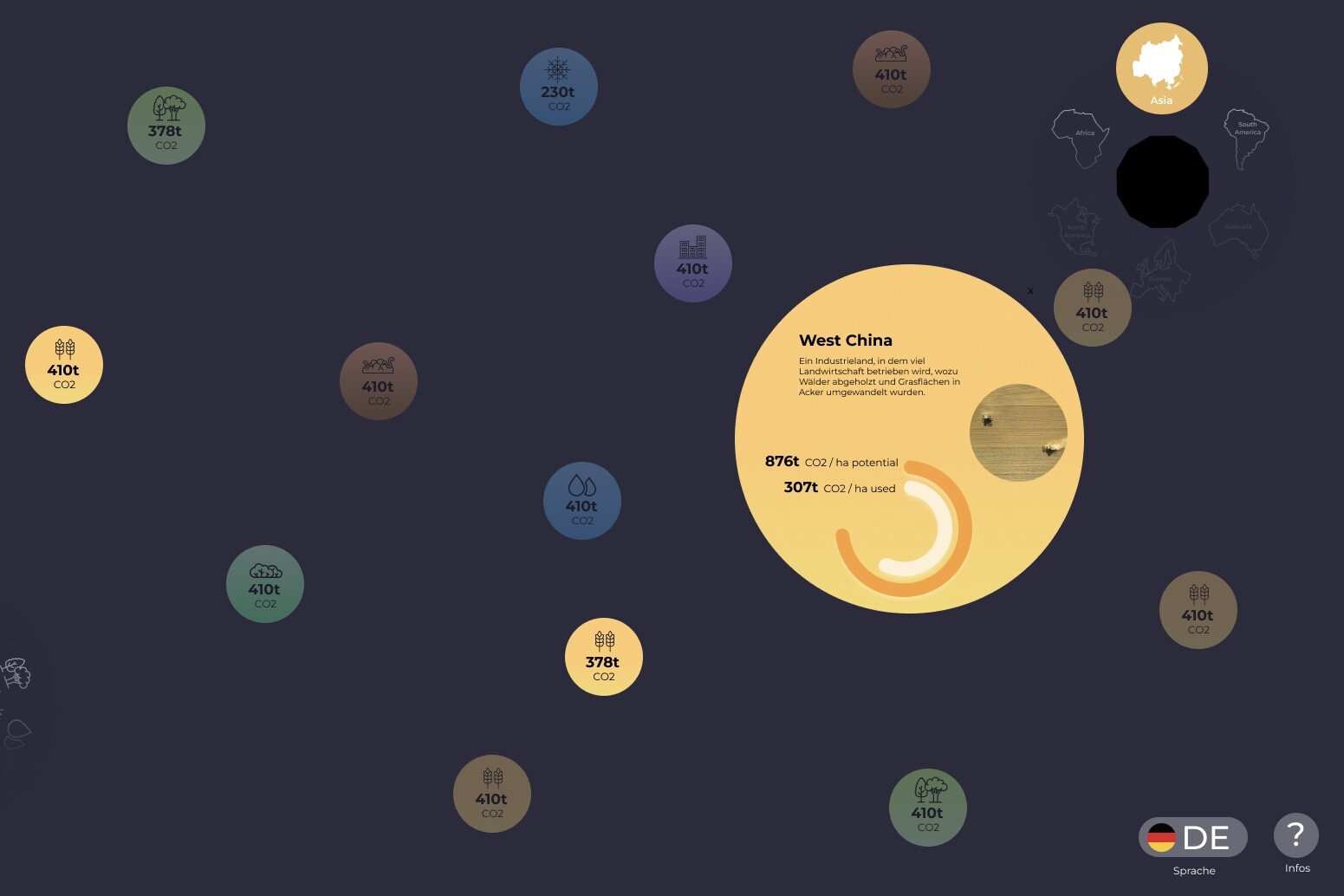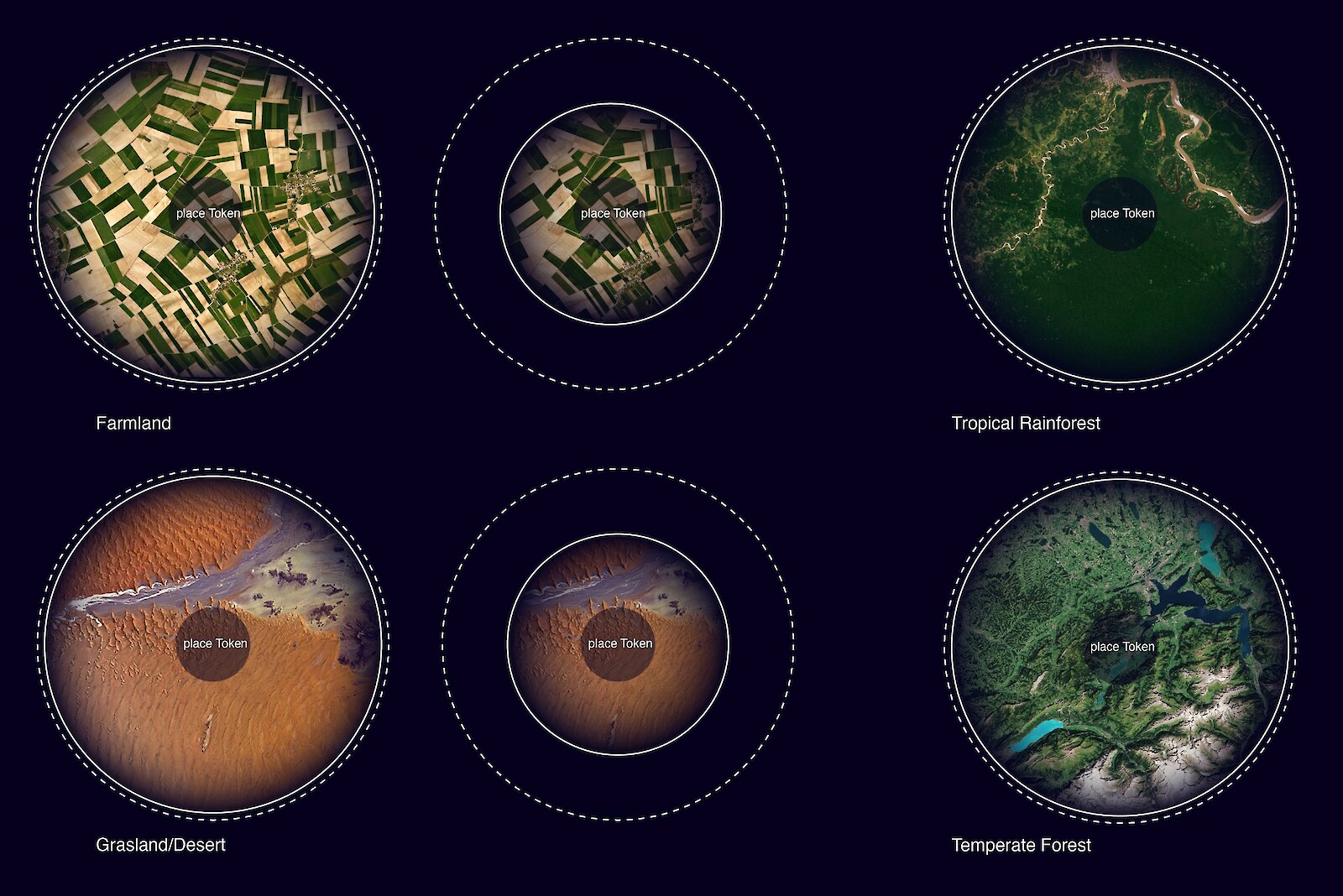Data Visualization 22: CO2 Depot Nature
Humans have altered the Earth greatly and emitted lots of CO2 through land use change, but with good stewardship (restoration + conservation), we will be able to store lots of CO2 again in vegetation and soil.
In collaboration with the ETH Crowther Lab and the ETH science museum focusTerra, we will make the potential of nature-based CO2 storage understandable and explorable, while simultaneously calling for action.
Student Projects:
PIXEL, PAST. POTENTIAL is an interactive touch application that lets people explore natural-based solutions for CO2 storage. It was created in collaboration with ETH Crowther Lab and focusTerra. The application is parted in two modes, past and potential, where the former is giving the user an impression of how humans have affected the climate over the last two centuries. The potential mode on the other hand shows where the greatest potential for natural CO2 storage lies.
In NATURE BASED CO2 STORAGE each token represents a hotspot identified by the Crowther Lab. The user is able to place the tokens onto the touch table to view a hotspot. There is a set of four global parameters, representing the four main data sets: Above and below ground, current and potential carbon storage which can be toggled by the user once they place it on the touchtable. This will affect each hotspot on display. For each token there is a second UI. It is a scroll through menu controlled by the rotation of the token. This allow users to toggle between different land types located within the hotspot. This data visualisation will be individually manipulated for each token. The land types include: Cropland, Grassland, Mangroves, Treecover, Permanent, Bodies of Water, Builtup and Moss & Lichen.
THE POWER OF SOIL showcases the CO2 storage potential of belowground soil communities. As the role of these species is generally not very well-known and even underestimated, we wanted to increase awareness of this by giving information and visualizing their important global role in carbon storage. The result is an interactive application for the touch table using its tokens.
On the main screen of CO2 STORAGE, the user is presented with a global screen, which contains data-bubbles, showing information about the CO2 storage at different land covers and continents. By using the selection wheel and turning the tokens, the user is able to select specific landcovers and continents.
DFC aims to give information about current CO² storage and the restoration potential in places so called Hotspot areas around the world.




